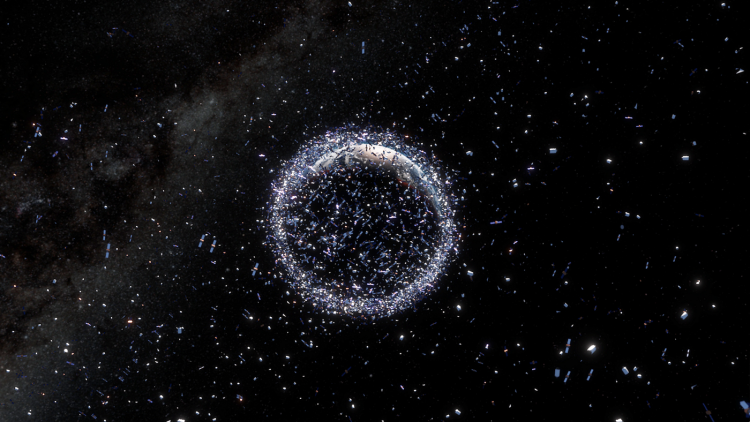Space junk is blocking our view of the stars, scientists say

The night sky is becoming increasingly filled with shiny satellites and space junk that pose a significant threat to our view of the cosmos, as well as astronomical research, a new study warns.
The researchers found that the more than 9,300 tons (8,440 metric tons) of space objects orbiting Earth, including inoperative satellites and chunks of spent rocket stages, increase the overall brightness of the night sky by more than 10% over large parts of the planet.

Such an increase would mean large swathes of the planet are considered light polluted, making it increasingly difficult for astronomers to take accurate measurements, and increasing the likelihood that they will miss significant discoveries altogether, the researchers said in the journal Monthly Notices of the Royal Astronomical Society.
“We expected the sky brightness increase would be marginal, if any, but our first theoretical estimates have proved extremely surprising and thus encouraged us to report our results promptly,” lead study author Miroslav Kocifaj, a senior researcher at the Slovak Academy of Sciences, said in a statement.
The researchers calculated the change in brightness by developing a model that takes into account the average size and brightness of each piece of debris.
According to the researchers, satellites and space garbage ruin astronomical images by scattering reflected sunlight, producing bright streaks that are indistinguishable from — and often brighter than — objects of astrophysical interest, making it difficult if not impossible for them to get a clear picture.
The researchers found that this effect is most pronounced when viewing the cosmos with low-resolution detectors, such as the human eye, resulting in a diffuse brightness across all of the night sky. Telescopes with high angular resolution and high sensitivity may also have part of their images ruined by the light pollution, although they can likely resolve the junk-reflected light into smears. Nevertheless, this could potentially obscure astronomical sights, such as the glowing clouds of stars along the disk of the Milky Way, wherever in the world star-gazers happen to be.
“Unlike ground-based light pollution, this kind of artificial light in the night sky can be seen across a large part of the Earth’s surface,” study co-author John Barentine, director of public policy for the International Dark-Sky Association, said in the statement. “Astronomers build observatories far from city lights to seek dark skies, but this form of light pollution has a much larger geographical reach.”
And the night sky could get even junkier and brighter, especially with the ongoing installation of “mega-constellations,” — large arrays of commercial satellites that aim to provide global internet access. At least 12 operators, including Amazon, SpaceX and OneWeb, have plans to launch new mega-constellation satellites or expand existing networks. SpaceX’s Starlink currently has 1,200 satellites in orbit, but the company intends to increase its fleet to 42,000 in the coming decades — roughly 14 times the number of operational satellites in orbit today.

One solution to the problem, proposed by the European Space Agency (ESA) in December 2019, is the 2025 launch of a four-armed robot to grab individual items of space junk. ESA is hoping to use the mission as a test for a much wider-reaching operation by a fleet of robot cleaners. In the meantime, ESA’s director general Johann-Dietrich Wörner has called for new rules to make companies and agencies that launch satellites responsible for tidying up their litter.
A team of Australian scientists has even proposed blasting the junk from space with a laser, Live Science previously reported.
The researchers hope that their paper will raise awareness of the detrimental effects of a trash-filled night sky.
“Our results imply that many more people than just astronomers stand to lose access to pristine night skies,” Barentine said. “This paper may really change the nature of that conversation.”

